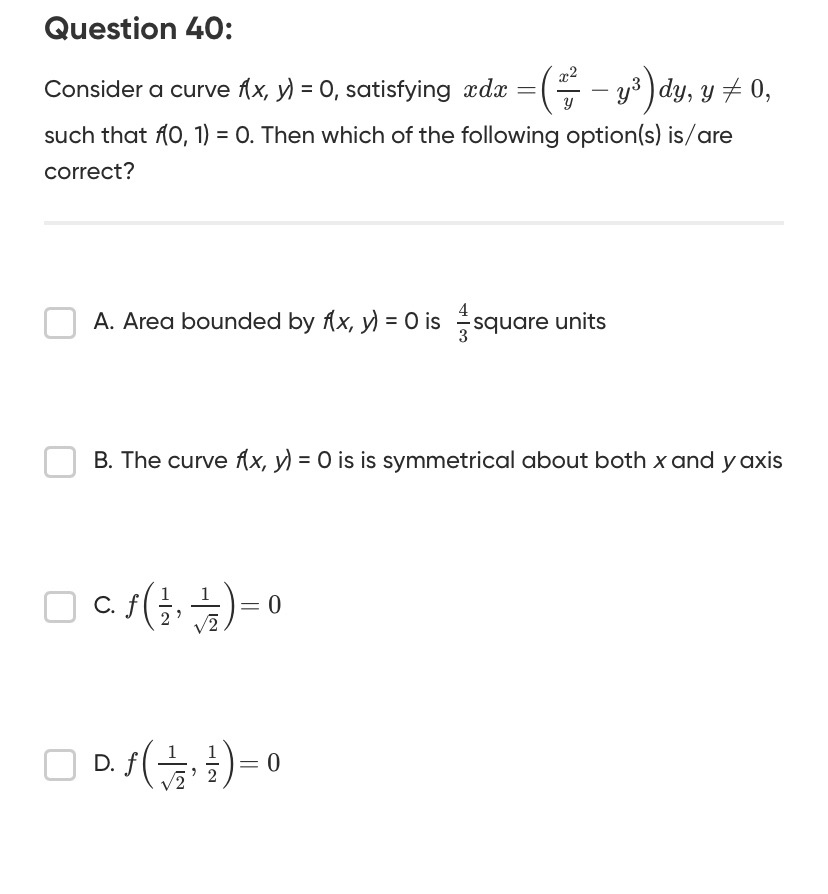Question
Question: Consider a curve $f(x, y) = 0$, satisfying $xdx = (\frac{x^2}{y}-y^3)dy, y \neq 0$, such that $f(0, ...
Consider a curve f(x,y)=0, satisfying xdx=(yx2−y3)dy,y=0, such that f(0,1)=0. Then which of the following option(s) is/are correct?

Area bounded by f(x,y)=0 is 34 square units
The curve f(x,y)=0 is is symmetrical about both x and y axis
f(21,21)=0
f(21,21)=0
A, B, C
Solution
The given differential equation is xdx=(yx2−y3)dy. Rewriting it as xydx+(y4−x2)dy=0. This is not an exact equation. An integrating factor μ(y)=y−3 is found, making the equation xy−2dx+(y−x2y−3)dy=0. This equation is exact. Integrating xy−2 with respect to x gives f(x,y)=2y2x2+g(y). Differentiating with respect to y and comparing with N′(x,y)=y−x2y−3 yields g′(y)=y, so g(y)=2y2. Thus, f(x,y)=2y2x2+2y2+C. Using the condition f(0,1)=0, we get C=−21. The curve equation is 2y2x2+2y2−21=0, which simplifies to x2=y2(1−y2).
Option A: The area bounded by x2=y2(1−y2) is calculated by integrating 2x with respect to y from y=−1 to y=1. The area of one loop (e.g., for y∈[0,1]) is 2∫01y1−y2dy=32. Due to symmetry, the total area is 34 square units.
Option B: The equation x2=y2(1−y2) is symmetric with respect to the y-axis (replacing x with −x) and the x-axis (replacing y with −y).
Option C: For f(21,21)=0, we check if (21,21) satisfies x2=y2(1−y2). (21)2=41 and (21)2(1−(21)2)=21(1−21)=41. The point lies on the curve.
Option D: For f(21,21)=0, we check if (21,21) satisfies x2=y2(1−y2). (21)2=21 and (21)2(1−(21)2)=41(1−41)=163. Since 21=163, the point does not lie on the curve.
